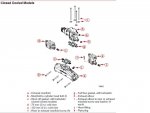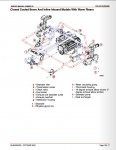2003 Mercruiser 6.2L MPI Horizon MIE. I will be replacing the manifolds, 3" risers, and elbows over the winter.
The engine is currently in the cold riser configuration. The obvious benefit of going with the warm riser is the risers should last much longer with coolant running through them vs salt water.
It is a mystery to me why the cold riser configuration would be used when all that is required is moving a couple fittings and gaskets around and changing a couple hoses that may be a little short after the change but that is how I found it.
I was just wondering if there is some reason or situation where the warm riser configuration should not be used?
The engine is currently in the cold riser configuration. The obvious benefit of going with the warm riser is the risers should last much longer with coolant running through them vs salt water.
It is a mystery to me why the cold riser configuration would be used when all that is required is moving a couple fittings and gaskets around and changing a couple hoses that may be a little short after the change but that is how I found it.
I was just wondering if there is some reason or situation where the warm riser configuration should not be used?






















